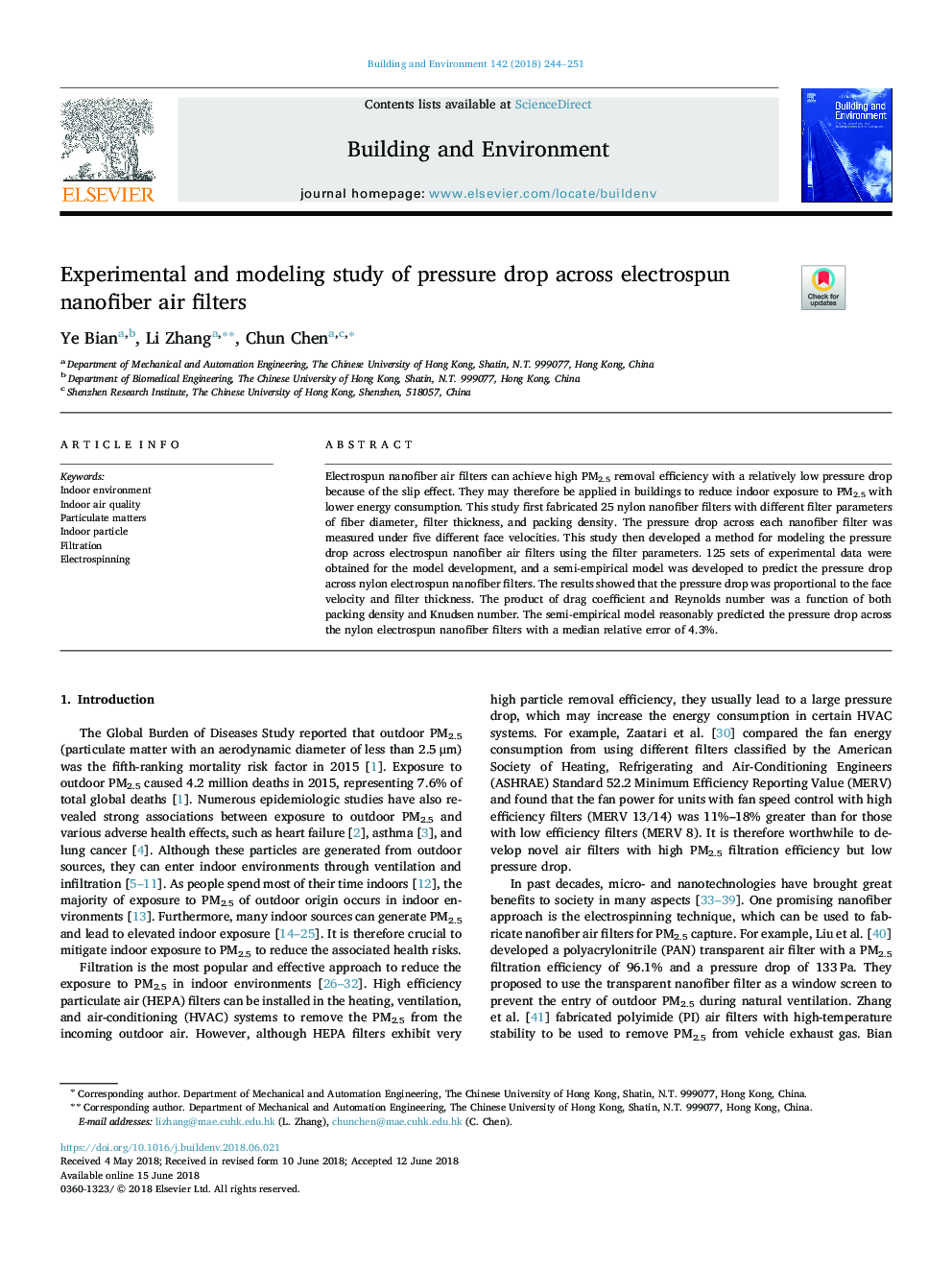| Article ID | Journal | Published Year | Pages | File Type |
|---|---|---|---|---|
| 6696815 | Building and Environment | 2018 | 8 Pages |
Abstract
Electrospun nanofiber air filters can achieve high PM2.5 removal efficiency with a relatively low pressure drop because of the slip effect. They may therefore be applied in buildings to reduce indoor exposure to PM2.5 with lower energy consumption. This study first fabricated 25 nylon nanofiber filters with different filter parameters of fiber diameter, filter thickness, and packing density. The pressure drop across each nanofiber filter was measured under five different face velocities. This study then developed a method for modeling the pressure drop across electrospun nanofiber air filters using the filter parameters. 125 sets of experimental data were obtained for the model development, and a semi-empirical model was developed to predict the pressure drop across nylon electrospun nanofiber filters. The results showed that the pressure drop was proportional to the face velocity and filter thickness. The product of drag coefficient and Reynolds number was a function of both packing density and Knudsen number. The semi-empirical model reasonably predicted the pressure drop across the nylon electrospun nanofiber filters with a median relative error of 4.3%.
Related Topics
Physical Sciences and Engineering
Energy
Renewable Energy, Sustainability and the Environment
Authors
Ye Bian, Li Zhang, Chun Chen,
